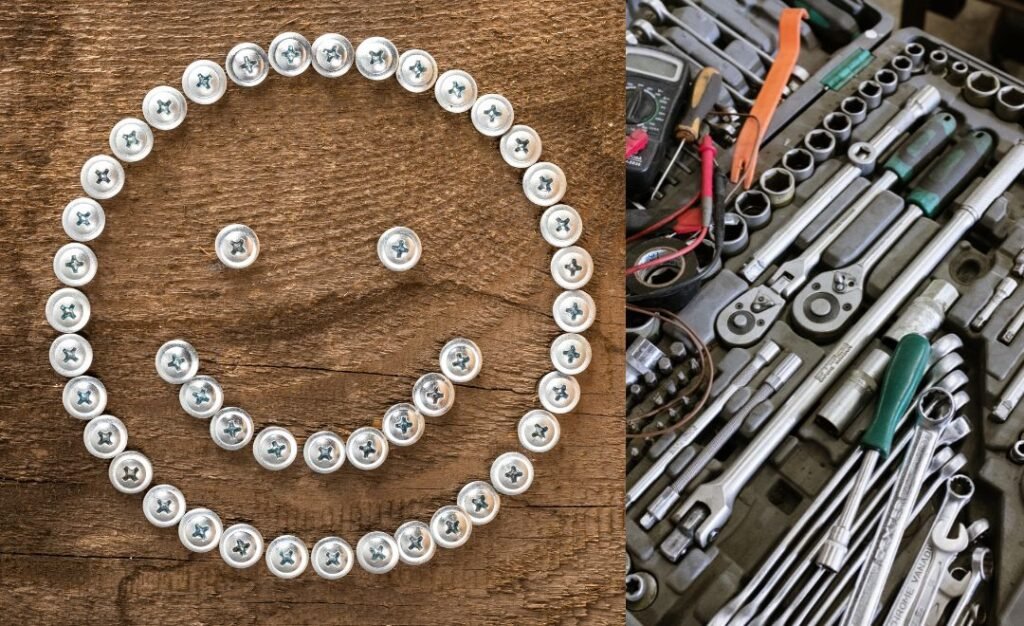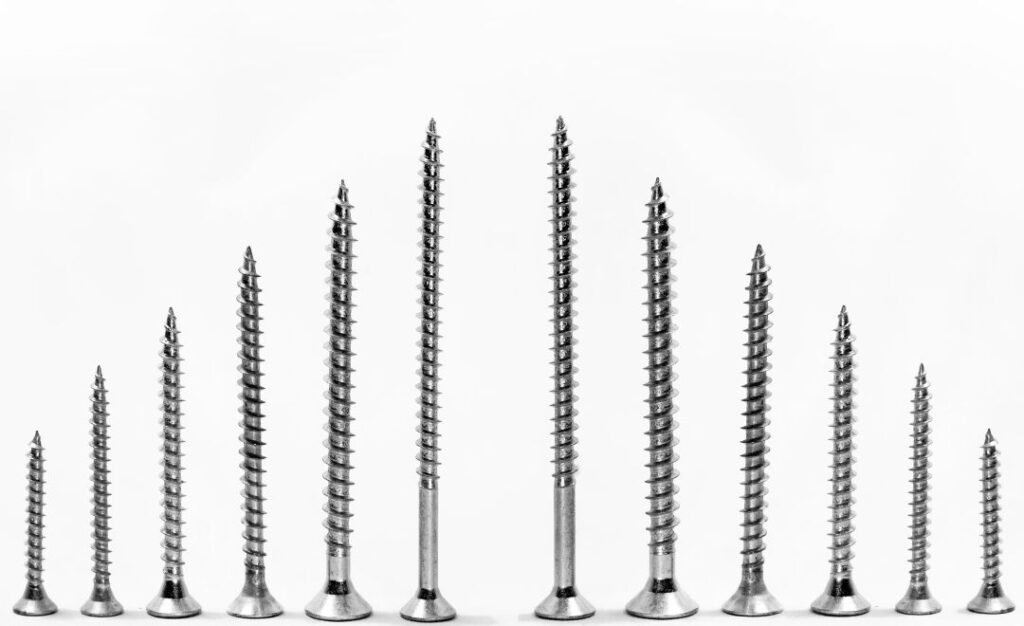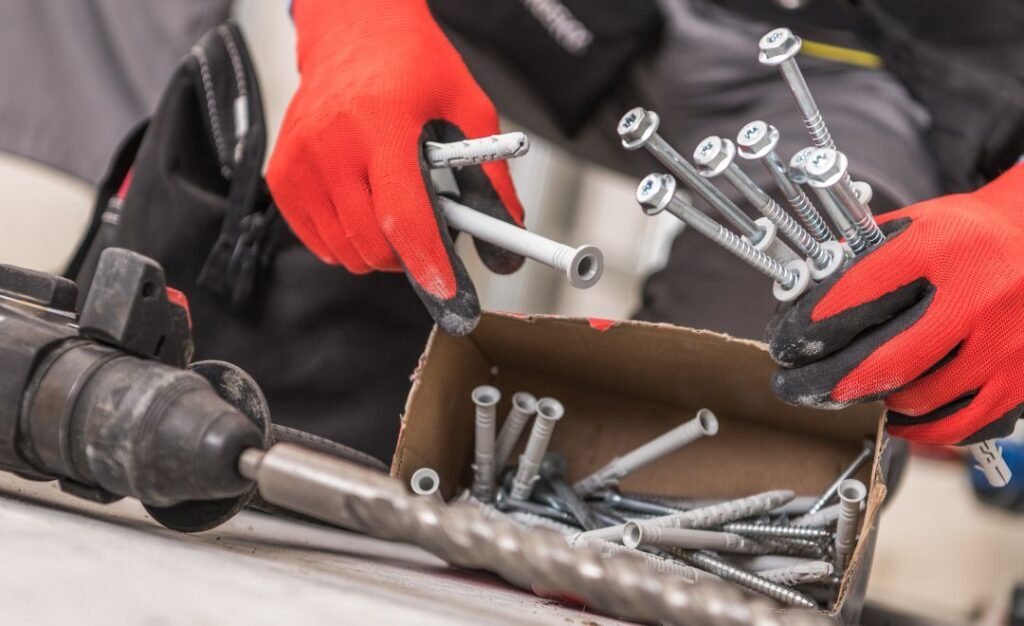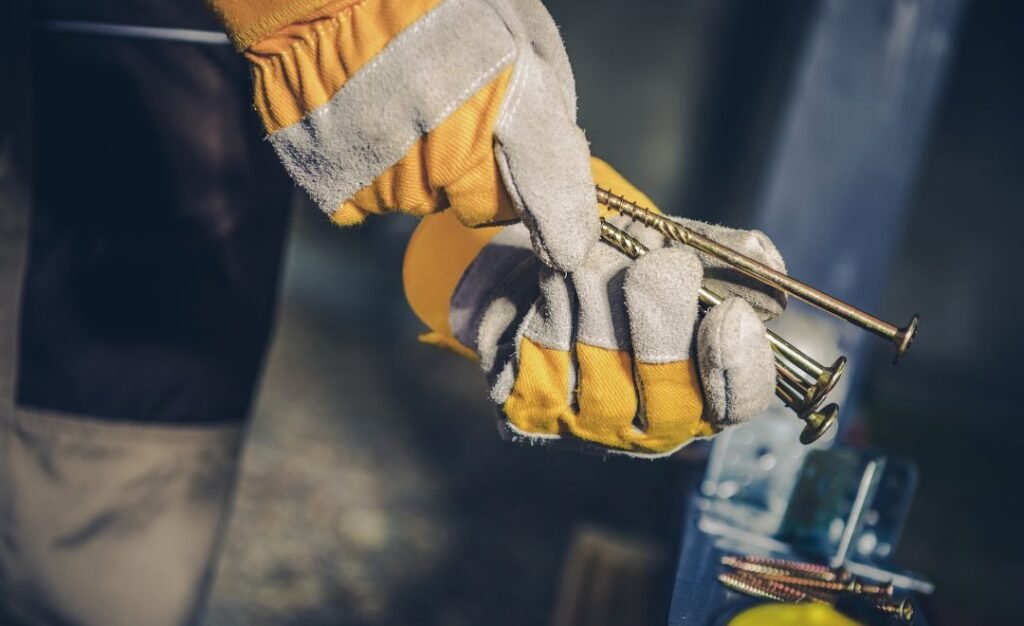Selecting the right screws is essential to achieve strong and long-lasting results in any construction or DIY project. With various screw types, materials, and sizes to choose from, making an informed decision is crucial for the success and durability of your project. This thorough guide will cover the essentials of choosing the best screws for your specific needs, including information on types and materials, as well as installation tips.

Types of Screws and Their Uses
Understanding the different types of available screws and their specific uses is essential in choosing the best one for your project.
Wood Screws
Wood screws are specifically designed for use with wood. They have a tapered body with coarse threads that provide a strong grip in wooden materials. Key characteristics include:
- Thread Design: Coarse threads are used for better holding power.
- Head Types: Flat head for flush mounting or oval head for a slightly raised finish.
- Common Applications: Furniture assembly, cabinetry, and deck building.
“Ensure you have these screws for your woodworking projects as they provide a secure connection between wooden components.”
Sheet Metal Screws
Sheet metal screws are engineered for fastening metal sheets together. They feature sharp, self-tapping threads that cut into metal surfaces, creating a strong hold. Key characteristics include:
- Thread Design: Sharp, coarse threads intended for use with metal.
- Head Types: Often hex or slotted.
- Remember the following: Typical Uses: HVAC systems, automotive repairs, and metal fabrication.
Use these screws for securely fastening metal components in various applications.
Machine Screws
Machine screws are used in conjunction with nuts or pre-tapped holes. They have a uniform diameter and are commonly used in machinery and electronics. Key characteristics include:
- Thread Design: Uniform threads, often fine.
- Head Types: Flat, round, or hex heads.
- Typical Uses: Machinery, electronics, and appliances.
These screws are perfect for precise and reliable fastening in mechanical assemblies.
Screw Materials and Their Properties
The material of a screw affects its performance, durability, and suitability for various environments. Here’s a detailed look at common screw materials:
Steel Screws
Steel screws are known for their strength and versatility. They are suitable for a wide range of applications but can be prone to rust if not properly coated. Key characteristics include:
- Types: Steel screws are often coated or plated for rust resistance.
- Coatings: Zinc plating for moderate corrosion resistance, black oxide for more robust protection.
- Typical Uses: General construction, furniture assembly, and drywall installation.
Steel screws are a good choice for many general-purpose applications.
Stainless Steel Screws
Stainless steel screws offer superior corrosion resistance, making them ideal for use in harsh environments. Key characteristics include:
- Types: 304 stainless steel for most applications, 316 stainless steel for marine and chemical resistance.
- Typical Uses: Marine environments, outdoor furniture, and kitchen installations.
These screws are highly durable and resistant to rust, ensuring longevity in challenging conditions.
Brass Screws
Brass screws are valued for their aesthetic appeal and resistance to corrosion. They are less strong compared to steel but are used where appearance and non-magnetic properties are important. Key characteristics include:
- Appearance: Brass screws offer a distinctive golden color.
- Typical Uses: Antique restorations, electrical components, and decorative fixtures.
Brass screws are chosen for their look and non-corrosive properties.

Determining the Right Screw Size
Choosing the correct screw size is critical for a secure and effective fastening. Here’s how to determine the appropriate size:
Diameter
The diameter of the screw should match the material and the application. Larger diameters offer greater holding power but can cause splitting in wood if too large.
Length
Screw length should be sufficient to penetrate both materials being joined without extending through the other side. For general woodworking, a length that is approximately twice the thickness of the material is often recommended.
Thread Count
The thread count affects how well the screw grips into the material. Coarse threads are preferred for softer materials like wood, while fine threads are better for harder materials like metal.
Head Types and Their Functions
Different screw head types determine how the screw will be driven and the type of tool required. Here are common head types and their uses:
Flat Head Screws
Flat head screws are designed to sit flush with the surface, providing a clean finish. They are commonly used in:
- Woodworking: For a smooth, flush surface.
- Furniture Assembly: Where appearance matters.
Their countersunk design ensures a sleek and professional look.
Round Head Screws
Round head screws protrude above the surface, providing a larger surface area for holding materials together. They are ideal for:
- Structural Applications: Where a strong hold is required.
- Mechanical Assemblies: Where the screw head is visible.
Their raised profile allows for a more secure grip.
Hex Head Screws
Hex head screws feature a six-sided head that requires a wrench or socket for tightening. They are suited for:
- Heavy-Duty Construction: Where high torque is needed.
- Automotive Repairs: For reliable fastening in machinery.
Their robust design ensures a strong and reliable connection.

Specialty Screws for Specific Applications
For unique projects or materials, specialty screws may be required. Here are a few examples:
Deck Screws
Deck screws are designed specifically for outdoor use. They feature a corrosion-resistant coating and a sharp tip for easy driving into treated wood. Ideal for:
- Deck Construction: Ensures durability and resistance to weather conditions.
- Outdoor Furniture: Provides long-lasting performance.
Self-Tapping Screws
Self-tapping screws create their own thread as they are driven into materials, eliminating the need for pre-drilling. They are ideal for:
- Metalworking: Simplifies the assembly process.
- Plastic Applications: Allows for easy installation without additional tools.
Tips for Effective Screw Installation
To achieve the best results with screws, follow these installation tips:
- Pre-Drill Holes: Prevents wood from splitting and ensures smoother insertion.
- Use Proper Tools: Match the screwdriver or drill bit to the screw head to avoid stripping.
- Apply Lubricant: For tough materials, lubricant can reduce friction and ease driving.
Common Mistakes to Avoid When Choosing Screws
Selecting screws for a project involves more than just picking the right type and size. Avoid these common mistakes to ensure optimal results:
1. Overlooking Corrosion Resistance
Choosing screws without considering the environmental conditions can lead to premature failure. For outdoor or damp environments, ensure you use screws with appropriate corrosion resistance, such as stainless steel or coated screws. This will prevent rust and extend the lifespan of your project.
2. Ignoring Load-Bearing Requirements
Different screws have varying load-bearing capacities. Using screws that are too small or not rated for the weight they need to support can result in weak joints or structural failure. Always check the load ratings and select screws that meet or exceed the requirements of your project.
3. Using the Wrong Thread Type
Using screws with the wrong thread type for the material can cause poor performance. For instance, coarse threads are better for soft materials like wood, while fine threads are suited for harder materials like metal. Ensure the thread type matches the material to achieve a strong, secure hold.
4. Skipping Pre-Drilling
For materials prone to splitting, such as hardwood, skipping the pre-drilling step can lead to damage. Pre-drilling pilot holes helps guide the screw and reduces the risk of splitting or cracking. This is particularly important for screws that need to go into dense or brittle materials.
5. Choosing Incorrect Screw Length
Using screws that are too short or too long can affect the strength and appearance of the finished project. Ensure the screw length is appropriate for the thickness of the materials being joined. Generally, screws should penetrate at least halfway into the second material for a secure hold.

Advanced Tips for Professional Applications
For those involved in more advanced or specialized applications, consider these additional tips:
1. Use a Screw Gauge
A screw gauge or thread gauge can help you precisely determine the size and thread pitch of screws. This tool ensures compatibility with pre-drilled holes or nuts, reducing errors and improving the accuracy of your assembly.
2. Opt for Self-Drilling Screws
For faster installation in metal or hard materials, self-drilling screws can be highly effective. These screws have a drill bit tip that eliminates the need for pre-drilling, speeding up the process and reducing labor.
3. Invest in High-Quality Screws
For critical or high-stress applications, investing in high-quality screws can make a significant difference. Premium screws offer better performance, durability, and resistance to wear and tear. Choose screws from reputable manufacturers to ensure consistency and reliability.
Conclusion
It is crucial to select the right screws for your project to ensure its success and longevity. By familiarizing yourself with the different types, materials, sizes, and proper installation techniques, you can make well-informed decisions that result in strong, durable outcomes. Whether you’re tackling a basic DIY project or a more complex construction job, paying attention to these details will help you attain professional-quality results and steer clear of common mistakes.

FAQs
1. What are the most common types of screws?
The most common types include wood screws, machine screws, sheet metal screws, and self-tapping screws. Each is designed for specific applications and materials.
2. How do I determine the correct screw length for my project?
Measure the combined thickness of the materials to be joined. Select a screw length that allows it to penetrate at least halfway into the second material for a secure hold.
3. What is the difference between coarse and fine thread screws?
Coarse threads are better for softer materials like wood as they provide better grip, while fine threads are suited for harder materials such as metal, offering more precision.
4. Can I use screws for outdoor applications?
Yes, but you should use screws made of materials resistant to corrosion, such as stainless steel or coated screws, to withstand the elements.
5. What types of screws are best for drywall?
Drywall screws, which have a sharp point and coarse threads, are specifically designed for drywall. They are ideal for securing drywall to wooden or metal studs.
6. How can I prevent screws from stripping?
Use the correct screwdriver or drill bit size for the screw, avoid overtightening, and pre-drill pilot holes in dense materials to reduce the risk of stripping.
7. Are there screws that don’t require pre-drilling?
Self-drilling screws have a built-in drill bit tip that eliminates the need for pre-drilling, making them suitable for metal and hard materials.
8. What are the best screws for metalwork?
Machine screws or self-tapping screws are suited for metalwork. Machine screws require a tapped hole, while self-tapping screws can create their own hole.
9. How do I choose screws for a heavy-duty application?
For heavy-duty applications, use screws with higher load-bearing capacities, such as those made from high-strength materials or larger sizes. Ensure they are suitable for the specific load requirements.
10. What should I do if my screws are rusting?
Replace rusty screws with corrosion-resistant alternatives. Store screws in a dry place to prevent rust and consider using a rust-inhibiting coating for added protection.


